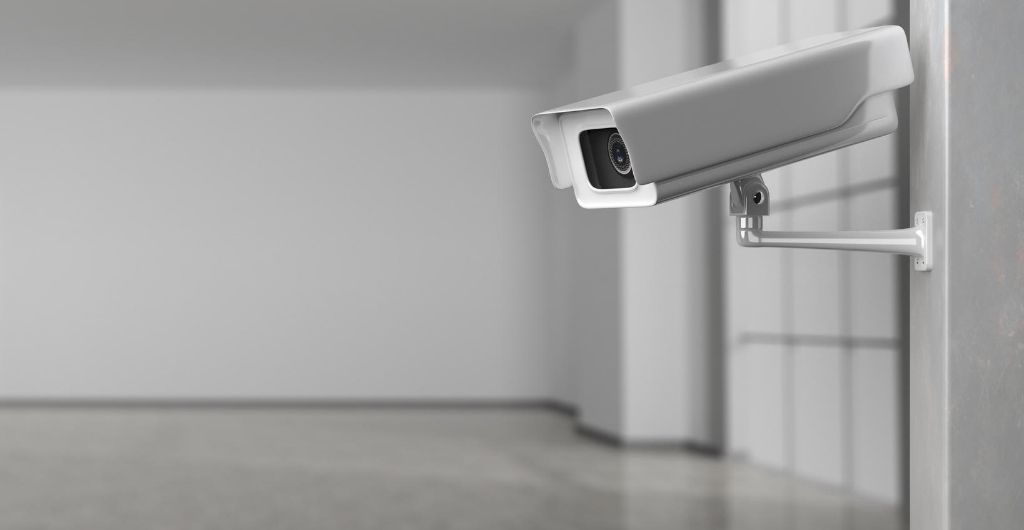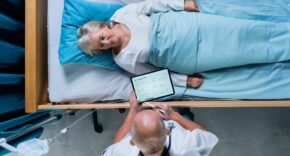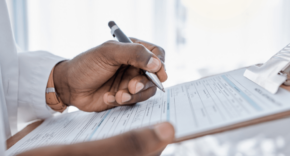
Clem Robertson, a tech veteran and founder of R4DAR Technologies, a disruptive player in the autonomy landscape, explains how automation can play a key role in healthcare in the wake of Covid-19, so long as the fidelity and integrity of the captured data can be guaranteed.
The NHS has always been at the forefront of every political agenda. This longstanding institution is under constant pressure to deliver the highest standards of patient care with ever-diminishing funds and never have we appreciated its true worth more than over the last few weeks. Since March, in spite of PPE shortages, committed hospital staff and outreach teams have gone above and beyond the call of duty to respond to the health crisis. Without their dedication a grave situation could have been so much worse.
In the aftermath of Covid-19 it has become increasingly apparent how reliant the healthcare sector still is on manual processes for security, day-to-day operations, the delivery of critically urgent supplies, and for mobilising different teams in an emergency situation. Blue light services require staffed control rooms to manage first response teams. Hospitals are heavily dependent on laborious processes for many routine tasks; to ascertain how many beds are occupied at any given time or to determine the exact whereabouts of potentially life-saving supplies. “Organ” banks and research labs are at the mercy of favourable traffic conditions for most of their urgent deliveries, with delays over a certain time frame having irreversible consequences.
But what if these different tasks did not require human involvement? What if a CCTV camera could automatically rotate and focus on a scene or object of interest without manual intervention? What if specialist beds or intensive care equipment could be located in real time using existing security infrastructure combined with low-cost identification technology? Or what if drones could be used for the urgent delivery of life-saving donor organs or vaccination supplies, providing status updates at the different stages for accountability and traceability purposes? As healthcare establishments slowly to return to normal, with the introduction of new safety measures, automation is poised to play a vital role going forwards by helping to assure there are adequate fallback systems in place to capture the required location, security and situational data needed to undertake these different tasks, with minimal or no human oversight.
One key area where progress can be made now is by automating location, classification and identification processes for essential assets or key members of staff, whilst at the same time having the capability to distinguish them from their immediate surroundings regardless of the weather or lighting conditions. Current CCTV camera technologies either sweep the scene at random or require an operator to point the camera at a particular area of interest.
The ideal scenario is to remove the need for a manual operator altogether, but this has been somewhat challenging until now because of the limitations and high expense associated with existing technologies. As things stand at the moment, the fidelity of the data cameras and Lidars capture cannot always be depended upon to acquire the levels of detail needed in all situations, such as poor weather or lighting conditions or at distances beyond 100 Meters. What is needed is an embedded solution that augments the fidelity of the data obtained by camera sensors, thus delivering unambiguous information enabling swift and accurate decision-making.
Thanks to a disruptive approach to the validation and accuracy of situational and positional data being spearheaded by a consortium of researchers, academics and commercial organisations, including R4DAR Tech, the reality of such a solution might not be that far away.
Intended to operate alongside existing CCTV systems, drones and other tracking technologies, the consortium is investigating the feasibility of augmenting their situational awareness capabilities to determine, what & who is out there, where it is and what it is doing. In practical terms this would allow a CCTV controller to uniquely identify and distinguish key personnel such as paramedics, police officers or key workers within a busy emergency situation through a labelled video feed, along with an accompanying location map of the incident. The same principles could also be applied to drones and other tracking technologies to accelerate delivery or to monitor the status of equipment, patients and supplies, as they travel through a facility.
Healthcare organisations are long overdue a technological overhaul, but this has been held back by a myriad of factors, including implementation cost, existing infrastructure and legacy systems/technologies. Following years of warnings that the NHS is becoming less and less able to cope with even routine demands, the outcome of the current pandemic could be the driving force needed to trigger a change. Automation holds great potential to safeguard patients and staff from future outbreaks and It will lead to significant operational savings in the longer term. You just need to certify the reliability of the data generated before it can be applied to real-world applications.












